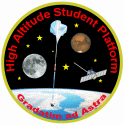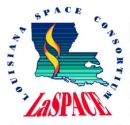



Payload 10 Information
Payload Flight Number:
Institution:
Payload Title:
Hydrogen-Alpha Exploration with Light Intensity Observation Systems V
Student Leader:
Faculty Advisor:
Payload class:
LARGE
Payload ID Number:
10
Mass:
18.5kg
Current:
1.5A
Serial Downlink:
YES
Analog Downlink:
NO
Serial Commands:
YES
Discrete Commands:
NO
Payload Specification & Integration Plan
Due:
Delivered:
Payload Integration Certification
Scheduled:
Actual:
Flight Operation Plan
Due:
Delivered:
Final Flight / Science Report
Due:
Delivered:
Abstract:
Currently, solar observation is done either from the ground, where it is subjected to extensive atmospheric interference, or from satellites, which are extremely expensive. Observing the sun from a high altitude balloon platform mitigates almost all atmospheric interference at a fraction of the cost of actually placing a payload into orbit. HELIOS V is a continuation of the University of Colorado’s HELIOS missions. It will use the solar tracking system developed during the HELIOS IV mission to capture valuable science and engineering data. Its science objectives include capturing high quality images of the sun in the hydrogen-alpha wavelength to observe sunspots and possibly solar flares. Its engineering objectives include testing a star tracker for the potential of incorporating star tracking in future iterations of HELIOS’s ADCS system, so that the payload can function during the entirety of HASP’s flight. The HELIOS V team will have a faculty mentor, but all other members of the team shall be undergraduate engineering students, including the project manager, systems engineers, and team leads. If accepted and flown, HELIOS V will occupy a large payload spot, will draw the allotted 30 V from the HASP platform, and will utilize serial uplink and downlink. |